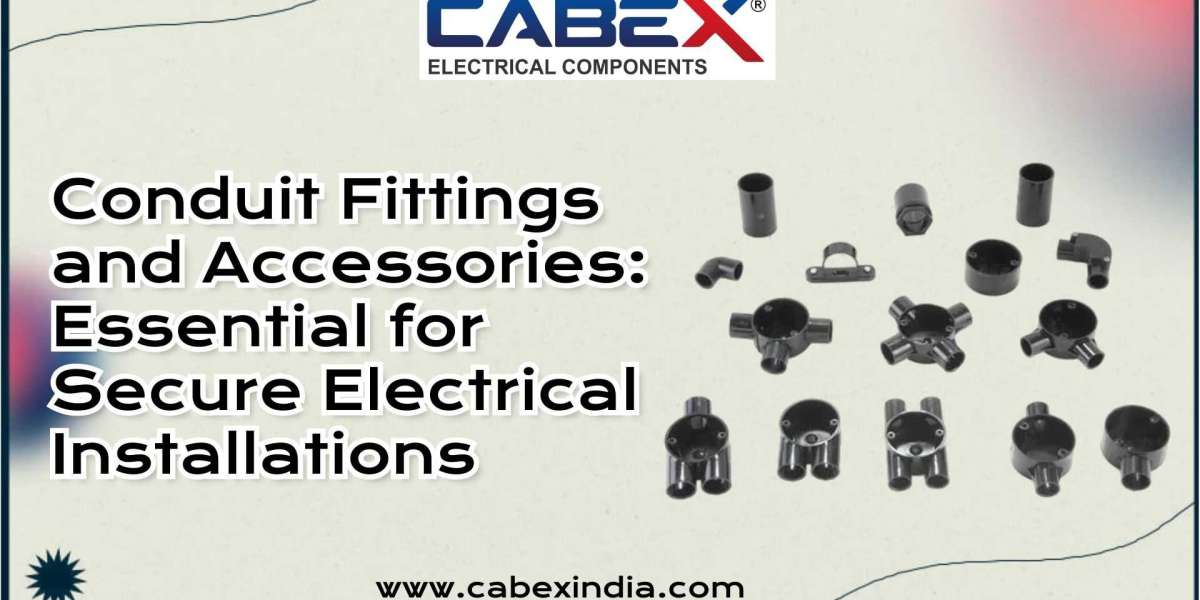Introduction
Conduit fittings and accessories are key components used in electrical conduit systems to protect and route electrical wiring in industrial, commercial, and residential installations. These components ensure that conduits are securely connected, providing protection from environmental hazards, mechanical stress, and potential damage to electrical cables. They play a vital role in organizing and securing cables, preventing accidents and ensuring compliance with safety regulations.
Key Conduit Fittings and Accessories
- Elbows
Elbows are used to change the direction of the conduit run, typically at 45 or 90 degrees, allowing for flexible routing around corners or obstacles. - Couplings
Couplings connect two sections of conduit, ensuring a continuous and secure pathway for electrical cables. They are available in different materials such as steel, plastic, or aluminum. - Conduit Bodies
Conduit bodies provide access points for pulling wires, making it easier to install or maintain wiring systems. They are available in various shapes, such as "L," "T," and "C" configurations. - Bushings
Bushings protect wires from sharp edges at the end of conduits, preventing abrasion or damage to the cable insulation during installation and over time. - Locknuts
Locknuts are used to secure the conduit to electrical boxes or enclosures, ensuring that the connection remains tight and stable even in high-vibration environments. - Straps and Clamps
Straps and clamps hold the conduit securely in place along walls, ceilings, or other surfaces, preventing it from shifting or becoming dislodged. - Adapters and Reducers
Adapters and reducers are used to join conduits of different sizes or types, allowing for versatile installations and compatibility across various conduit systems.
Applications of Conduit Fittings and Accessories
- Industrial Electrical Systems
In factories and warehouses, conduit fittings provide the protection needed to route electrical cables safely through machinery and equipment. - Commercial Buildings
Conduit fittings and accessories are commonly used in office buildings, shopping centers, and other commercial spaces to protect electrical wiring and ensure code compliance. - Residential Installations
Conduit systems are often used in homes to safeguard electrical wiring, particularly in areas exposed to moisture, such as basements or garages. - Outdoor and Underground Installations
For outdoor and underground electrical systems, conduit fittings ensure cables are protected from water, dirt, and weather-related damage, maintaining the integrity of the wiring.
Benefits of Using Conduit Fittings and Accessories
- Enhanced Protection
Conduit fittings provide a layer of protection to electrical cables, safeguarding them from physical damage, moisture, and corrosion. - Improved Safety
Properly installed conduit fittings reduce the risk of electrical accidents, such as short circuits, fires, or electric shocks, ensuring a safe electrical system. - Versatile and Flexible Installations
With various fittings available, conduit systems can be easily customized to fit different wiring layouts, offering flexibility in design and installation. - Compliance with Electrical Codes
Conduit fittings and accessories help ensure that electrical installations meet safety codes and standards, reducing the risk of non-compliance penalties.
Conclusion
Conduit fittings and accessories are vital components in any electrical conduit system, providing protection, flexibility, and safety for wiring installations. Whether used in industrial, commercial, or residential settings, these fittings ensure that electrical cables are routed securely and remain free from damage. By choosing the right conduit fittings and accessories, installers can enhance the durability and safety of their electrical systems, ensuring long-term performance and compliance with safety regulations.







